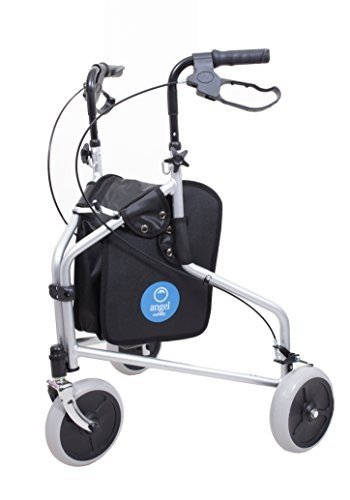The Main Problem With Mobility Scooter And How You Can Resolve It
A Comprehensive Guide to Buying a Mobility Scooter
Mobility scooters have become an important tool for numerous people aiming to enhance their self-reliance and mobility. With a large range of designs and functions readily available, choosing the best mobility scooter can be daunting. This short article provides an informative guide to help customers navigate their options, assess their needs, and make a notified purchase.
Comprehending Mobility Scooters
Mobility scooters are electric cars created for individuals who experience mobility challenges. They are especially beneficial for seniors, those with disabilities, or individuals recuperating from injuries. Mobility scooters can vary widely in terms of design, functions, and rates.
Types of Mobility Scooters
Before embarking on a purchase, it's necessary to understand the different kinds of mobility scooters available:
Three-Wheel Scooters:
- Generally more maneuverable in tight spaces
- Lightweight and portable
- Perfect for indoor use
Four-Wheel Scooters:
- Offer greater stability and balance
- Appropriate for outdoor use over numerous surfaces
- Usually have a longer battery life
Foldable/Portable Scooters:
- Designed to be quickly transported and saved
- Can typically fit in the trunk of a car
- Suitable for those who travel regularly
Sturdy Scooters:
- Built to accommodate larger individuals
- Frequently featured more robust functions for outside usage
- Typically equipped with larger batteries for extended range
Aspects to Consider When Buying a Mobility Scooter
1. Weight Capacity
Pick a mobility scooter that can support the user's weight. Many scooters have a weight limit varying from 250 to 500 pounds. It is crucial to make sure that the scooter can accommodate the user easily.
2. Variety and Battery Life
The range is how far the mobility scooter can travel on a single charge. Normal ranges differ between 10 to 30 miles. Consider the user's everyday activities and choose a scooter with an ideal variety.
3. Scooter Dimensions
Think about the size of the scooter, including its weight and dimensions. A more compact scooter may be perfect for narrow corridors and tight spaces, while larger models use extra stability and comfort.
4. Terrain Capability
Examine where the scooter will mainly be used. If the user plans to take a trip mostly on pavement, a lightweight design might be sufficient. However, if the user requires to traverse gravel or unequal surfaces, consider a four-wheel scooter constructed for off-road use.
Top Features to Look For
Comfort
- Adjustable Seats: Look for scooters with cushioned and height-adjustable seats to make sure comfort throughout travel.
- Armrests: These improve security and support while browsing.
Security and Visibility
- Headlights and Taillights: Essential for nighttime use.
- Turn Signals and Reflectors: Improve exposure and security while on the roadway.
User-Friendly Controls
- Joystick or Drive Controls: These must be intuitive and simple to manipulate.
- Easy-to-Read Displays: A control board that shows battery life, speed, and range can enhance the user experience.
Extra Features
- Storage Compartments: These provide added convenience for bring individual products while on the go.
- Weather condition Protection: Consider designs with rain covers or windscreens if used in variable climate condition.
Expense Considerations
When budgeting for a mobility scooter, costs can vary anywhere from ₤ 500 to over ₤ 5,000 depending on the model, functions, and brand. Extra expenses might consist of:
- Extended Warranty: Protects versus problems and can save cash in the long run.
- Devices: Optional features, such as upgraded seats, lights, or storage options.
Function
Cost Range
Basic Models
₤ 500 – ₤ 1,500
Mid-Range Models
₤ 1,500 – ₤ 3,000
High-End Models
₤ 3,000 – ₤ 5,000
Financing Options
Lots of sellers provide financing plans, and some local government efforts may provide grants or help for those in requirement. Examine potential financial assistance with community resources or mobility service organizations.
FAQs about Buying a Mobility Scooter
What is the difference between a mobility scooter and a wheelchair?
Mobility scooters are motorized and allow users to browse separately, while wheelchairs might require physical support or manual operation.
How do I keep a mobility scooter?
Routine maintenance involves inspecting battery life, cleaning the scooter, and examining tires and brakes. Constantly describe the user manual for specific guidelines.
Can mobility scooters be used inside?
Yes, many models are designed for both indoor and outside use. However, three-wheel scooters tend to be better matched for indoor navigation due to their tighter turning radius.
Are mobility scooters covered by insurance coverage?
Some insurance plans cover a portion of the expenses for mobility scooters if they are deemed medically needed. Contact your supplier for specific details.
How quick can a mobility scooter go?
A lot of mobility scooters have an optimal speed ranging from 4 to 8 miles per hour. Nevertheless, the appropriate rate may vary depending upon local regulations.
Acquiring a mobility scooter can significantly improve one's independence and lifestyle. By understanding the types, functions, and costs connected with mobility scooters, potential purchasers can make knowledgeable choices that fit their requirements and choices. Customization and thorough research study are key to making sure complete satisfaction with this essential investment.
